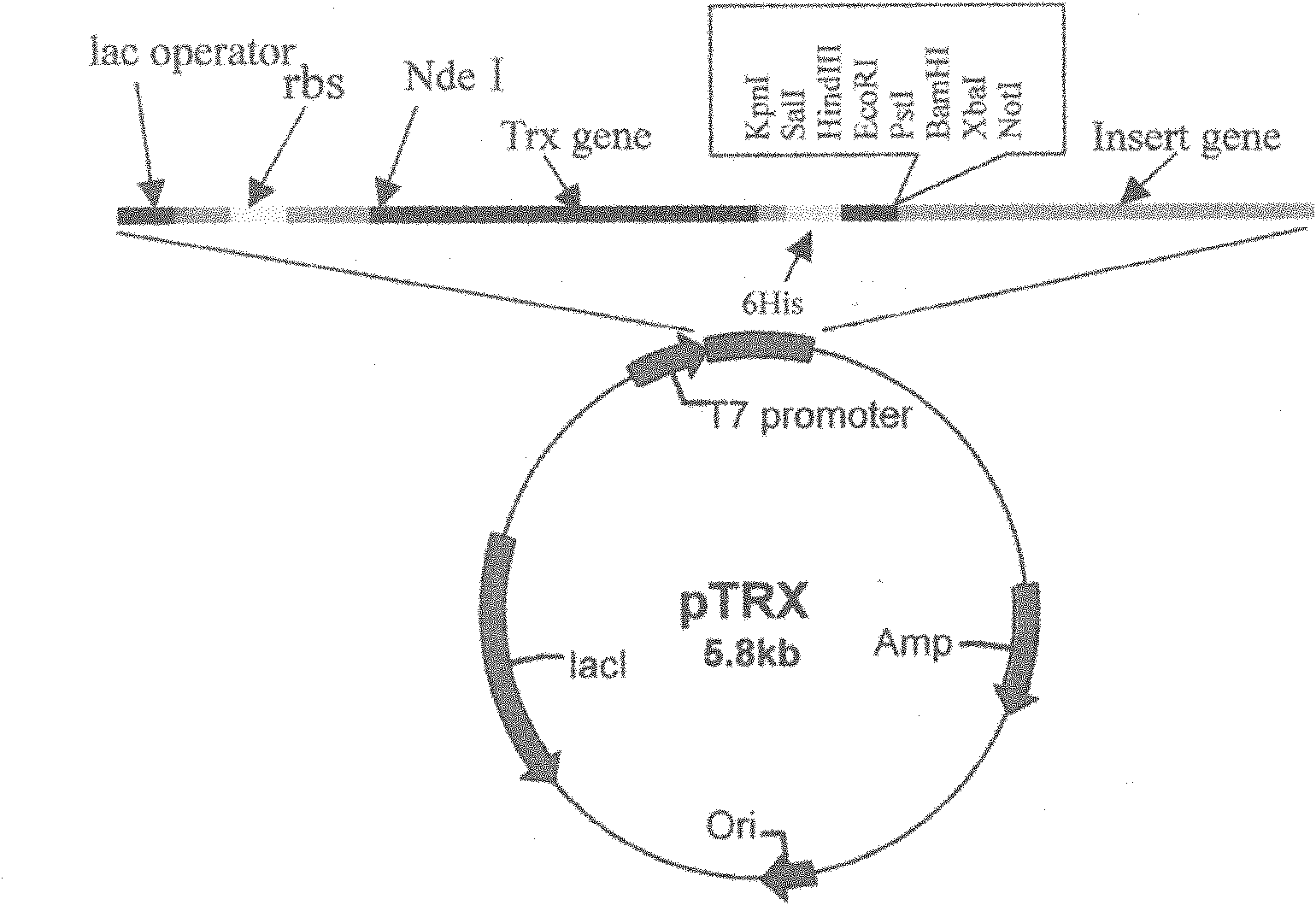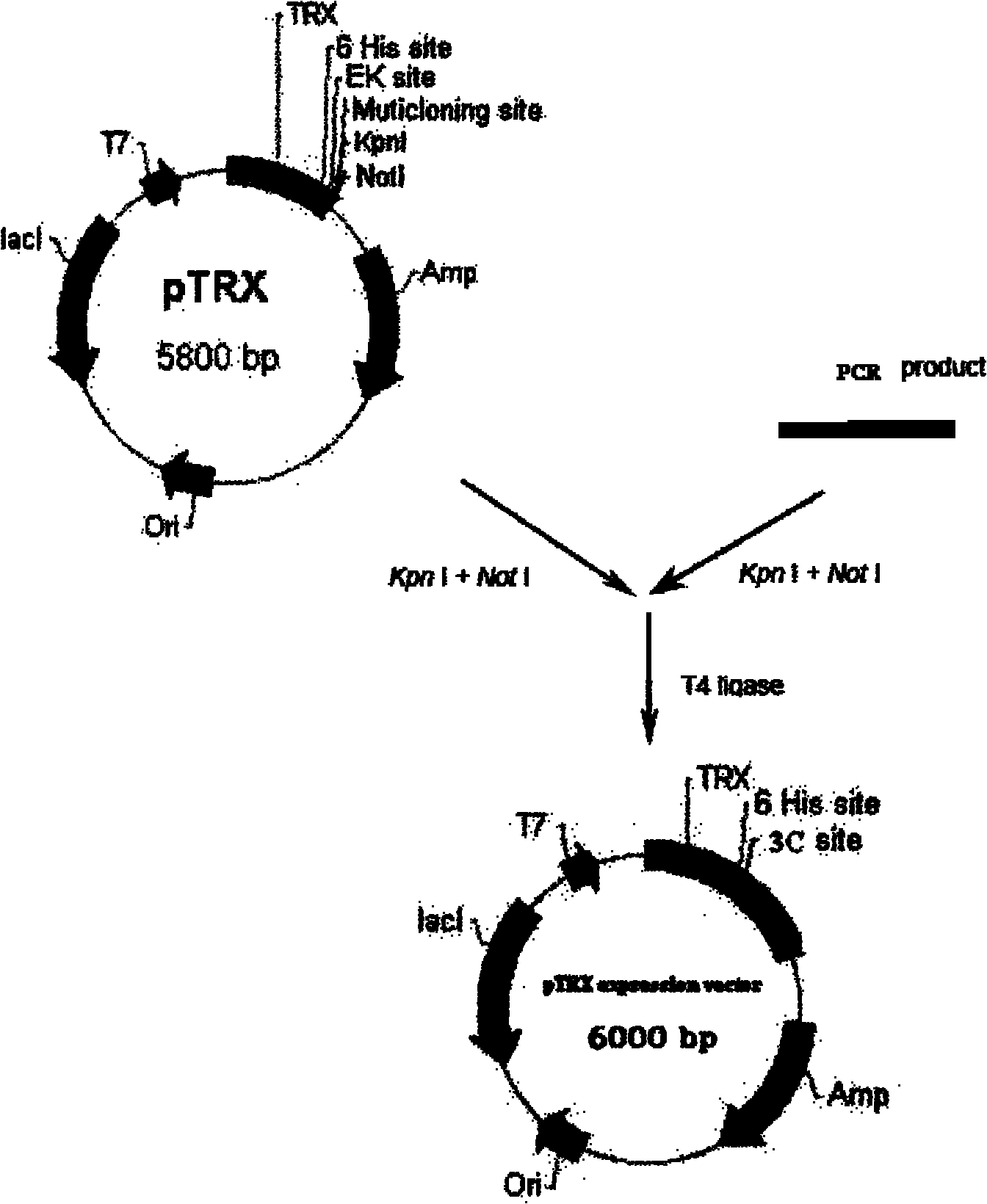Preparation and application of conotoxin striatus S21a in South China Sea
A technology for conotoxin and cono snail, which is applied in the preparation and application field of conotoxin S21a in the South China Sea, and can solve the problems that the subunit composition cannot be clearly elucidated and the like.
- Summary
- Abstract
- Description
- Claims
- Application Information
AI Technical Summary
Problems solved by technology
Method used
Image
Examples
Embodiment 1
[0036] Example 1: Extraction of total RNA and toxin cDNA cloning of cono venom venom tissue
[0037] The extraction of total RNA refers to the method of Gibcol BRL company LS reagent instructions were carried out. Taq DNA polymerase, 10×PCRBuffer and dNTP were purchased from Dingguo Company; PCR primers were synthesized by Invitrogen Company; other organic reagents were domestic analytical reagents and were purchased from Guangzhou Chemical Reagent Factory.
[0038] Take live snails, break the snail shell with a masonry hammer to expose the snail meat, carefully and quickly separate the poison tube tissue on ice, weigh it, quickly put it into liquid nitrogen and grind it fully, add 15 times the weight volume of LS reagent (that is, add 15ml to 1g of tissue), fully homogenize in an ice bath, and store in a -80°C refrigerator for extraction of total RNA. Take 50-100mg tissue sample, use 0.75ml Homogenize the LS reagent and let stand at 15-30°C for 5 minutes. Then add 0.2m...
Embodiment 2
[0066] Example 2: Construction of recombinant expression vector pTRX-S21.1
[0067] 1) Plasmids and strains:
[0068] Escherichia coli (Escherichia coli) DH5α was purchased from Invitrogen and kept by our laboratory, and its genotype is: DH5α: supE44Δlac U169 ( 80lacZAM15) hsdR17recA1endA1gyrA96thi-1relA1; Escherichia coli expression host strain BL21 (DE3) was purchased from Stratagene Company, the genotype is: BL21 (DE3): F-ompT hsdSB (r-B, m-B) dcm galλ (DE3).
[0069] 2) Reagents and other materials:
[0070] Restriction enzymes Kpn I, Not I and T4 DNA ligase were purchased from TaKaRa Company; Taq DNA polymerase, 10×PCRBuffer and dNTP were purchased from Dingguo Company; Gel Extraction Kit and Plasmid Miniprep Kit were products of OMEGA BIOTEK Company; BCA TM Protein Assay Kit is a product of PIERCE; Trans2K DNA Marker was purchased from TransGen; low molecular weight standard proteins 14,400-108,000kD and 14,300-97,200kD were purchased from KGI and TaKaRa respectively...
Embodiment 3
[0092] Example 3. Efficient prokaryotic expression of conotoxin polypeptide S21a from the South China Sea of China
[0093] 1) Expression of recombinant fusion protein
[0094] The recombinant expression vector pTRX-S21.1 with correct sequencing was transformed into Escherichia coli BL21(DE3) to construct an engineering strain. Pick a single colony of the engineering strain and inoculate it in the Amp+LB liquid enriched medium, and culture it with shaking at 37°C overnight as the seed bacteria. Take the seed bacteria and inoculate them in fresh Amp+LB rich medium at a volume ratio of 1:100, amplify the culture with vigorous shaking at 37°C until the OD600 is about 0.6, add IPTG to a final concentration of 0.1mmol / L, and add 20% glucose to The final concentration is 0.2%, and the expression is induced for 12 hours at 18°C. After induction, centrifuge at 4°C and 10,000rpm for 10min to harvest the bacteria. Wash the bacteria once with pre-cooled PBS buffer (pH7.4), centrifuge...
PUM
 Login to View More
Login to View More Abstract
Description
Claims
Application Information
 Login to View More
Login to View More - R&D
- Intellectual Property
- Life Sciences
- Materials
- Tech Scout
- Unparalleled Data Quality
- Higher Quality Content
- 60% Fewer Hallucinations
Browse by: Latest US Patents, China's latest patents, Technical Efficacy Thesaurus, Application Domain, Technology Topic, Popular Technical Reports.
© 2025 PatSnap. All rights reserved.Legal|Privacy policy|Modern Slavery Act Transparency Statement|Sitemap|About US| Contact US: help@patsnap.com



